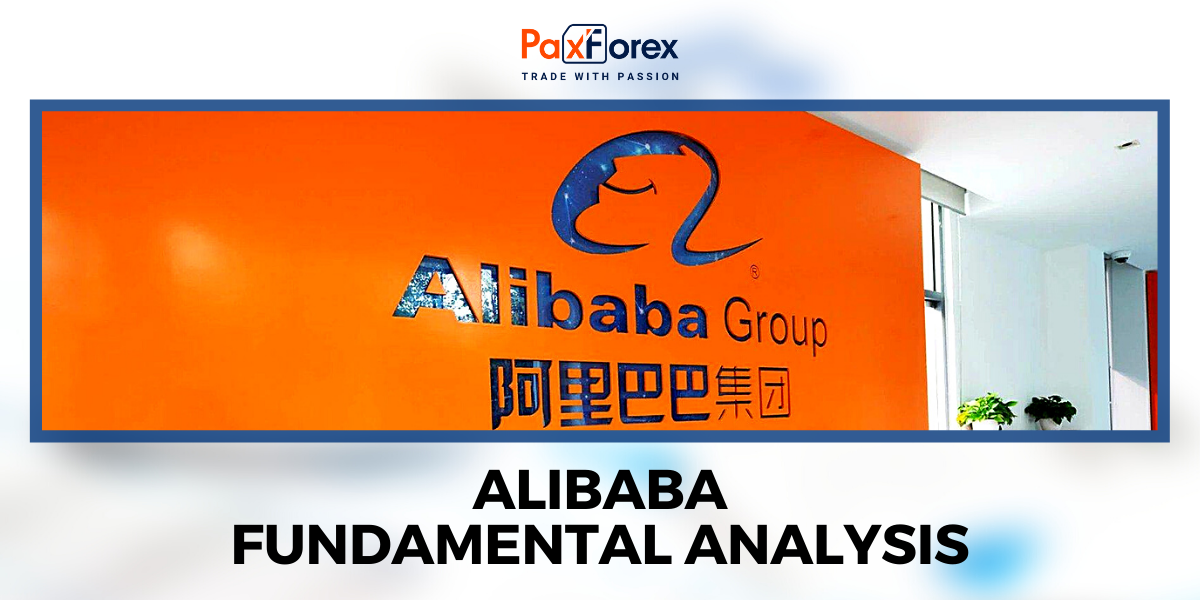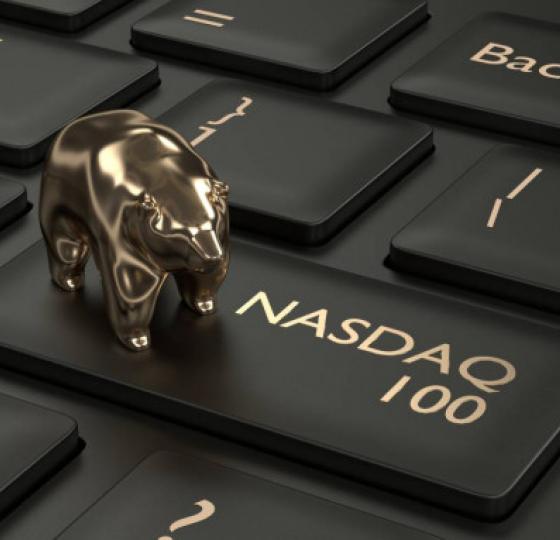
Source: PaxForex Premium Analytics Portal, Fundamental Insight
Alibaba Group Holding has faced a challenging period in recent years, with its stock plummeting 76% from its peak in late 2020, a decline that has persisted as it nears the multi-year low set in late 2022. Investors remain wary, deterred by ongoing concerns.
Yet, seasoned investors understand that stock ownership should be driven by the potential of a company's future rather than its past performance. Could Alibaba be on the verge of overcoming its current obstacles?
While Alibaba is widely recognized as a dominant force in China's e-commerce sector, its scope extends far beyond that. The company is also a key player in cloud computing, logistics, digital entertainment, and is exploring innovations in artificial intelligence and autonomous vehicles.
E-commerce remains Alibaba's primary revenue driver, accounting for about two-thirds of its income and nearly all its net profits. Thus, the future of Alibaba hinges significantly on its e-commerce performance.
Recently, Alibaba's e-commerce platforms, Tmall and Taobao, have shown signs of recovery, with a 4% year-over-year revenue increase in the first quarter, continuing the growth trend from last year. Its logistics, delivery, and international commerce divisions also reported strong double-digit growth for the same period, maintaining the momentum seen throughout 2023.
However, the company's Sun Art hypermarket division stands out as a notable weak spot, with other areas of the business making steady, if not spectacular, progress. This improvement is fueled by China's ongoing economic recovery and a rebound in consumer spending.
So why is Alibaba’s stock languishing despite Wall Street’s belief that it should be worth much more? The primary issue seems to be a pervasive skepticism about whether China, and Alibaba in particular, are truly on the path to recovery. This is a classic example of how investing can often be as much art as science, requiring a nuanced approach rather than solely relying on quantitative data.
To be fair, Alibaba has partly brought this stagnation upon itself. Since September of last year, the company has undergone several significant management changes, creating uncertainty about future stability. Additionally, Alibaba’s plans to spin off its cloud computing and logistics arms were announced but then abruptly reversed, further undermining investor confidence.
The broader narrative surrounding China’s economy is also contributing to the stock’s sluggish performance. The country's real estate sector is in turmoil, and both industrial activity and consumer spending have occasionally disappointed this year.
However, if we zoom out and consider the larger economic picture, the data is still relatively encouraging. For instance, retail sales in China grew by 2% year-over-year in June, marking the 18th consecutive month of growth despite falling short of expectations. Similarly, China’s industrial output growth slowed to 5.3% in June but remains robust, and the country’s second-quarter GDP growth of 4.7% was solid even if it missed the 5.1% forecast.
Analysts remain optimistic about Alibaba’s future prospects, predicting revenue growth of around 8% for this year and the next, with earnings expected to accelerate even faster starting next year. Moreover, Alibaba’s foray into artificial intelligence, aimed at aiding third-party sellers with cross-border transactions, holds potential that isn’t fully reflected in current projections.
The crux of the issue is that while the underlying conditions may be favorable, Alibaba's stock is weighed down by nearly four years of poor performance and prevalent pessimism. As Benjamin Graham aptly put it, "In the short run, the market is a voting machine but in the long run, it is a weighing machine." This means that short-term market prices reflect prevailing sentiments, while long-term stock performance ultimately mirrors the company’s true value.
Currently, Alibaba’s stock is seen as a hold due to prevailing pessimism, but this may not last forever. With China’s economy and Alibaba’s performance showing signs of strength, the stock could be a compelling opportunity for risk-tolerant investors. Notably, analysts' consensus price target for Alibaba is over 40% above its current price, indicating substantial potential upside for those willing to look beyond the current negativity.
As long as the price is above 72.00, follow the recommendations below:
- Time frame: D1
- Recommendation: long position
- Entry point: 77.83
- Take Profit 1: 81.00
- Take Profit 2: 85.00
Alternative scenario:
If the level of 72.00 is broken-down, follow the recommendations below:
- Time frame: D1
- Recommendation: short position
- Entry point: 72.00
- Take Profit 1: 68.00
- Take Profit 2: 66.00













